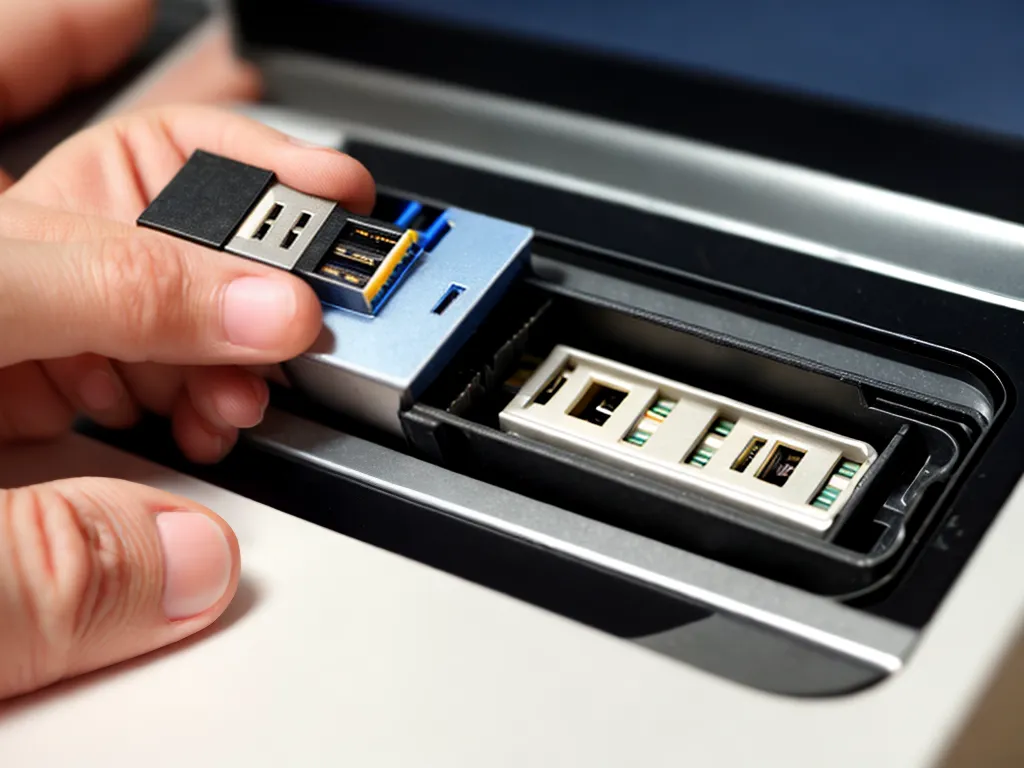
USB ports are extremely convenient for connecting peripherals like mice, keyboards, printers, and external storage devices to your computer. However, sometimes USB ports may stop functioning properly and prevent these devices from being recognized.
Here are some tips on how to troubleshoot and fix USB ports that are not working:
Check Physical Connection
The first thing to check is whether the USB device is properly plugged into the USB port. Examine the physical connection to ensure the USB cable is fully inserted into the port and connected securely to the device.
- Wiggle the cable gently to verify it is snugly in place. Cables can become slightly dislodged over time.
- Try connecting the device to another USB port as the issue may be with a specific port.
- Inspect the USB port for any obstructions like dust or debris that may be interfering with the connection. Use compressed air to clear out any particles.
- For laptops, check if the USB port is damaged. Look for any loose/missing pins inside the port. If pins are bent or broken, the USB port will need to be replaced.
Update Drivers
Outdated or corrupt drivers can prevent USB devices from functioning properly. Updating to the latest drivers may resolve USB connectivity problems.
- For Windows, open Device Manager, expand the Universal Serial Bus controllers section and update any drivers that have an exclamation/warning sign.
- On Macs, check for updates to USB drivers in System Preferences > Software Update.
- Visit the motherboard manufacturer’s website to download the latest chipset drivers which include USB drivers.
- Uninstall and reinstall USB drivers to refresh any software issues. Reboot the computer after updating drivers.
Reset USB Ports
If drivers are up to date, resetting the USB ports will reinitialize the hardware and clear any software glitches.
- Unplug all USB devices except mouse and keyboard.
- For Windows, open Device Manager, right-click on the problematic USB root hub, select Uninstall device.
- Check ‘Delete the driver software for this device’ and confirm. This will remove and refresh the USB driver stack.
- Scan for hardware changes in Device Manager to reinstall the USB root hub.
- For Macs, delete
/Library/Preferences/SystemConfiguration/com.apple.usb.plistfile and reboot.
Change USB Selective Suspend Setting
The USB selective suspend feature can sometimes lead to connectivity issues. Disabling it prevents USB ports from going into power saving deep sleep.
- In Windows Power options, under Advanced settings, disable ‘USB selective suspend’.
- Alternatively set this value to Disabled in the registry:
HKEY_LOCAL_MACHINE\SYSTEM\CurrentControlSet\Services\USB\USBSuspend - For Macs, disable ‘Put hard disks to sleep whenever possible’ under System Preferences > Energy Saver.
Check for Power Issues
Lack of consistent power supply can make USB unreliable. USB ports may not receive sufficient power to detect devices.
- Try connecting the USB device to the rear motherboard USB ports directly instead of the front panel or hub which share bandwidth.
- If connecting multiple devices, use individual ports instead of sharing hubs/splitters to avoid overloading.
- For laptops, connect the power adapter to fully power all USB ports. Without consistent power USB ports may flicker.
- Test the USB device on another computer to see if the issue is with that specific device drawing excess power.
Reinstall USB Controllers
As a last resort, you can uninstall and reinstall the USB controllers in Device Manager to completely refresh the USB driver stack.
- Unplug all USB devices and restart the computer into Safe Mode.
- Open Device Manager and under Universal Serial Bus controllers, right click on each USB device shown and select Uninstall device.
- When done, restart the computer normally and it will reinstall fresh USB controllers.
- Reconnect devices once booted into Windows.
With these troubleshooting steps, you should be able to resolve and fix any USB ports that are not detecting devices properly. If the problem persists after trying all solutions, the USB port itself may be damaged and need replacement. Contact the computer manufacturer for checking hardware issues.












